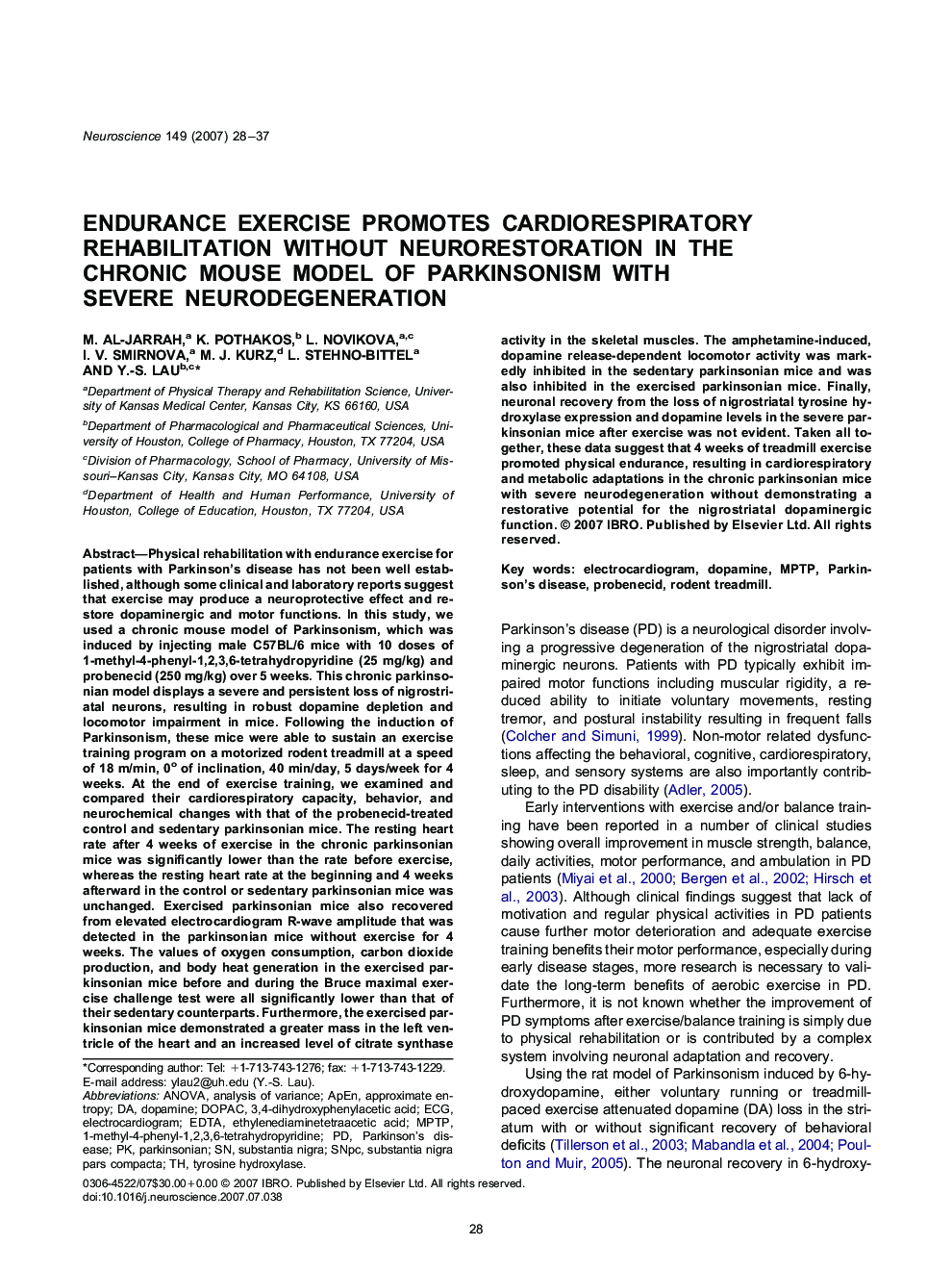| کد مقاله | کد نشریه | سال انتشار | مقاله انگلیسی | نسخه تمام متن |
|---|---|---|---|---|
| 4341196 | 1295827 | 2007 | 10 صفحه PDF | دانلود رایگان |

Physical rehabilitation with endurance exercise for patients with Parkinson’s disease has not been well established, although some clinical and laboratory reports suggest that exercise may produce a neuroprotective effect and restore dopaminergic and motor functions. In this study, we used a chronic mouse model of Parkinsonism, which was induced by injecting male C57BL/6 mice with 10 doses of 1-methyl-4-phenyl-1,2,3,6-tetrahydropyridine (25 mg/kg) and probenecid (250 mg/kg) over 5 weeks. This chronic parkinsonian model displays a severe and persistent loss of nigrostriatal neurons, resulting in robust dopamine depletion and locomotor impairment in mice. Following the induction of Parkinsonism, these mice were able to sustain an exercise training program on a motorized rodent treadmill at a speed of 18 m/min, 0° of inclination, 40 min/day, 5 days/week for 4 weeks. At the end of exercise training, we examined and compared their cardiorespiratory capacity, behavior, and neurochemical changes with that of the probenecid-treated control and sedentary parkinsonian mice. The resting heart rate after 4 weeks of exercise in the chronic parkinsonian mice was significantly lower than the rate before exercise, whereas the resting heart rate at the beginning and 4 weeks afterward in the control or sedentary parkinsonian mice was unchanged. Exercised parkinsonian mice also recovered from elevated electrocardiogram R-wave amplitude that was detected in the parkinsonian mice without exercise for 4 weeks. The values of oxygen consumption, carbon dioxide production, and body heat generation in the exercised parkinsonian mice before and during the Bruce maximal exercise challenge test were all significantly lower than that of their sedentary counterparts. Furthermore, the exercised parkinsonian mice demonstrated a greater mass in the left ventricle of the heart and an increased level of citrate synthase activity in the skeletal muscles. The amphetamine-induced, dopamine release-dependent locomotor activity was markedly inhibited in the sedentary parkinsonian mice and was also inhibited in the exercised parkinsonian mice. Finally, neuronal recovery from the loss of nigrostriatal tyrosine hydroxylase expression and dopamine levels in the severe parkinsonian mice after exercise was not evident. Taken all together, these data suggest that 4 weeks of treadmill exercise promoted physical endurance, resulting in cardiorespiratory and metabolic adaptations in the chronic parkinsonian mice with severe neurodegeneration without demonstrating a restorative potential for the nigrostriatal dopaminergic function.
Journal: Neuroscience - Volume 149, Issue 1, 12 October 2007, Pages 28–37